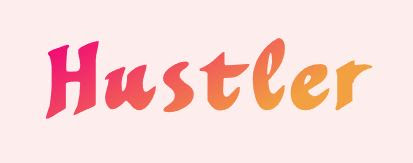An eighth-grade girl was struggling. Her reading comprehension was at a third-grade level, despite her best efforts. She was frustrated, falling behind and starting high school soon — where reading is embedded in every subject.
“She knew the material,” shares Dr. Michael Husmillo, Functional Neurology Director at Chiropractic Lifestyle Studios in Royal Oak. “But to ‘get it out’ and answer questions took her longer. She had to go back and reread.”
But over 12 weeks, something changed. By the end of the functional neurology program at CLS, the girl was reading at a 12th-grade level.
Through targeted brain-based exercises, her ability to track, process and comprehend text caught up. “It put her where she should be,” Husmillo says. “Her grades went up, and so did her confidence.”
What is functional neurology?
Functional neurology focuses on improving brain and nervous system function through neuroplasticity. That’s the brain’s ability to rewire and strengthen weak areas.
“We’re not looking at pathologies,” Husmillo says. “We’re looking at function.”
In other words, how can these underperforming parts of the brain fire more efficiently?
How does this apply to reading challenges?
Reading isn’t just about vision, Husmillo explains. It’s a complex process involving multiple areas of the brain, including the cortex, brainstem, cerebellum and frontal lobe. All of these play a role in tracking words, holding attention and processing information.
“Reading is not just, ‘Hey, I’ve got 20/20 vision.’ That’s good. But, then, ‘Why can I not read?’” Husmillo says. “Well, maybe I have a hard time seeing the words. My eyes can’t ‘hold’ the words very well. Or maybe I can’t ‘track’ the words on the page properly.”
Key neurological factors affecting reading can include:
- Visual processing issues: Struggling to track or follow words across a page
- Auditory processing issues: Difficulty distinguishing sounds in words
- Primitive reflexes: Retained infant reflexes that disrupt brain function
- Balance and coordination problems: Trouble with skipping, running or playing sports, signaling weak brain connections
- Sensory integration struggles: Sensitivity to textures, clothing or temperature changes that make focusing harder
“For some kids, it’s not a matter of, ‘Keep reading, you’ll get better,’” Husmillo says. “When they work on those deeper systems, though, it helps them improve — and they’re not so frustrated.”

What does functional neurology help for reading look like?
At CLS, the functional neurology reading program typically lasts 10-12 weeks. Children attend in-person twice a week while also doing daily home exercises.
“We start by assessing the areas of the brain that deal with coordination, balance and eye movement,” Husmillo says. After pinpointing weak brain areas, he tailors treatments to strengthen those areas. At CLS, these specific exercises include:
- Eye movement assessments using Right Eye software: Measures key factors like gaze stability (ability to maintain steady focus), pursuit (smooth tracking of moving objects) and saccades (quick shifts between focal points)
- Balance beam exercises: Strengthen coordination for improved reading mechanics
- BTrackS (balance tracking system): Enhances weight shifting and balance, which supports reading focus
- NSI (NeuroSensorimotor Integrator): This device uses eye-based exercises to refine visual tracking skills
- GyroStim: A multi-axis rotating chair that stimulates the vestibular system, cerebellum and frontal lobe to enhance comprehension
- Personalized eye exercises: Target weak brain connections for improved reading speed and comprehension
What ages and genders can it help?
“Our patients range from first grade to adulthood,” Husmillo says. “It’s a good split between boys and girls.”
And what kinds of results do kids actually see?
While every child’s progress is different, Husmillo says, “The biggest proof is in the pudding — it’s the better grades they get” after treatment.
“We’ve had high schoolers come in reading below grade level, and they realize if they work on these exercises, they see improvement,” he says. “They didn’t have to be forced to read more books. They were working on the systems that helped them read better.”
This content is sponsored by Chiropractic Lifestyle Studio and Functional Neurology Center, a wellness center in Royal Oak, Michigan. To learn more, visit the CLS website.
from Metro Parent https://ift.tt/RzGKytL









0 comments:
Post a Comment